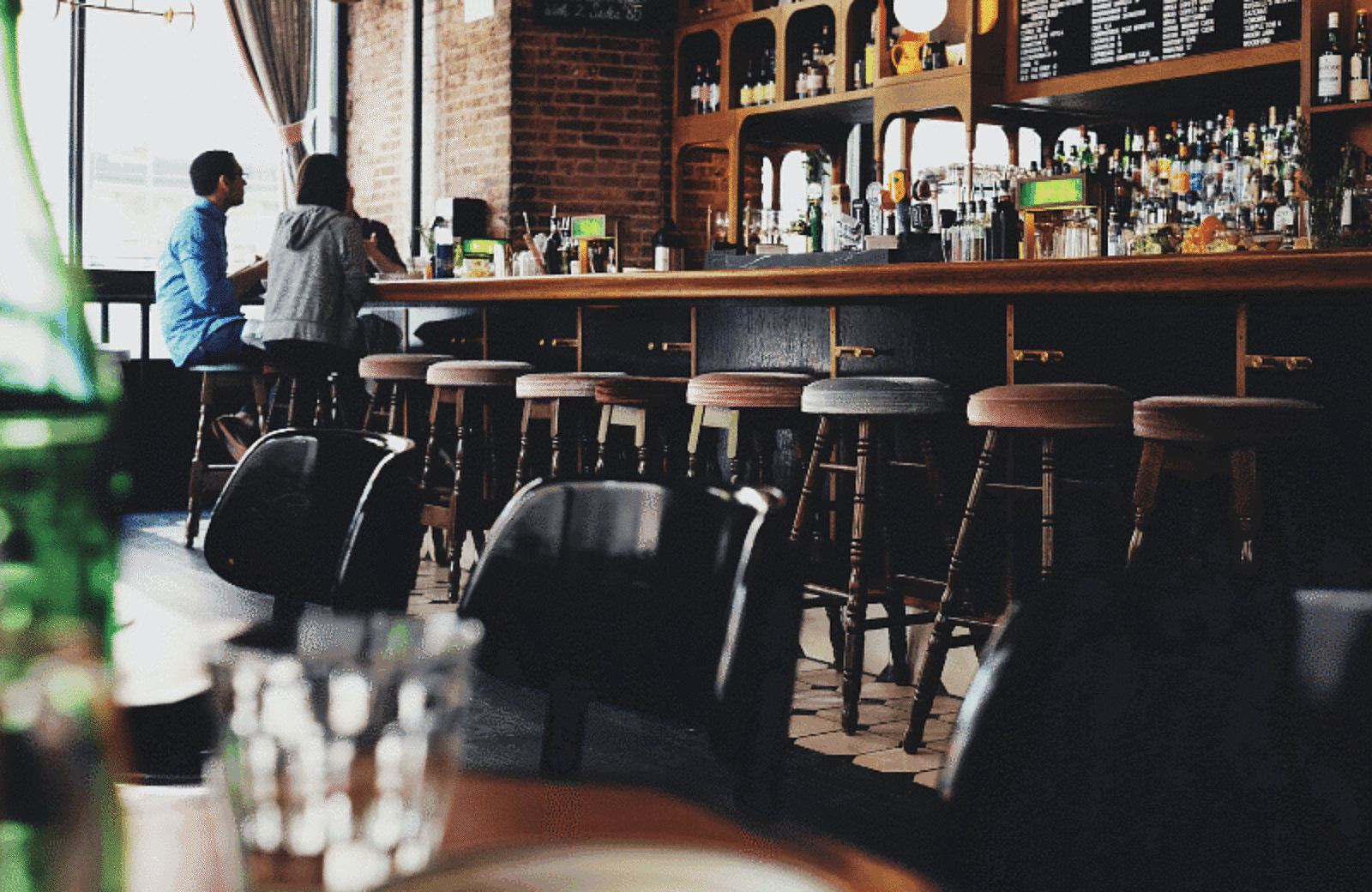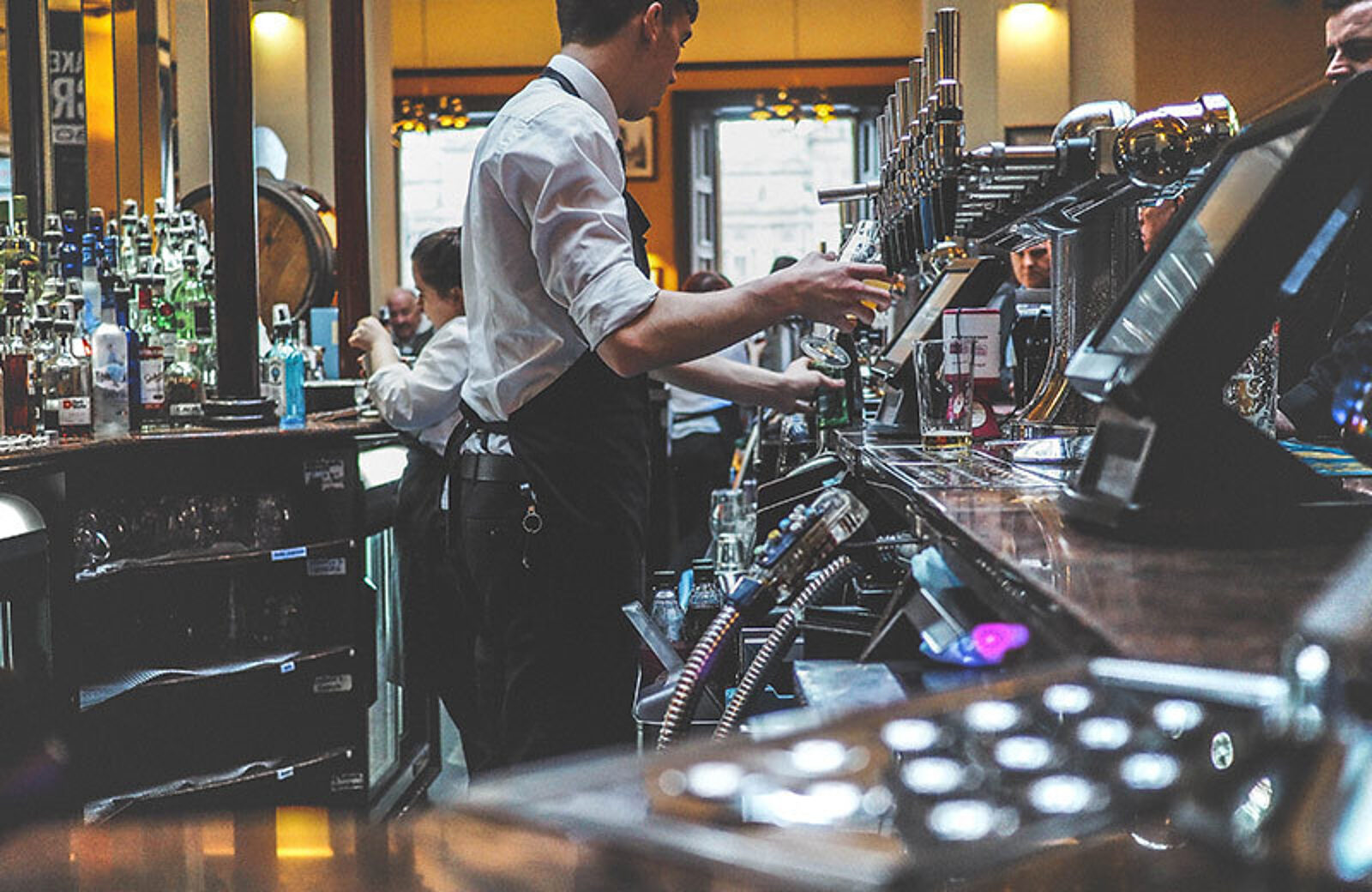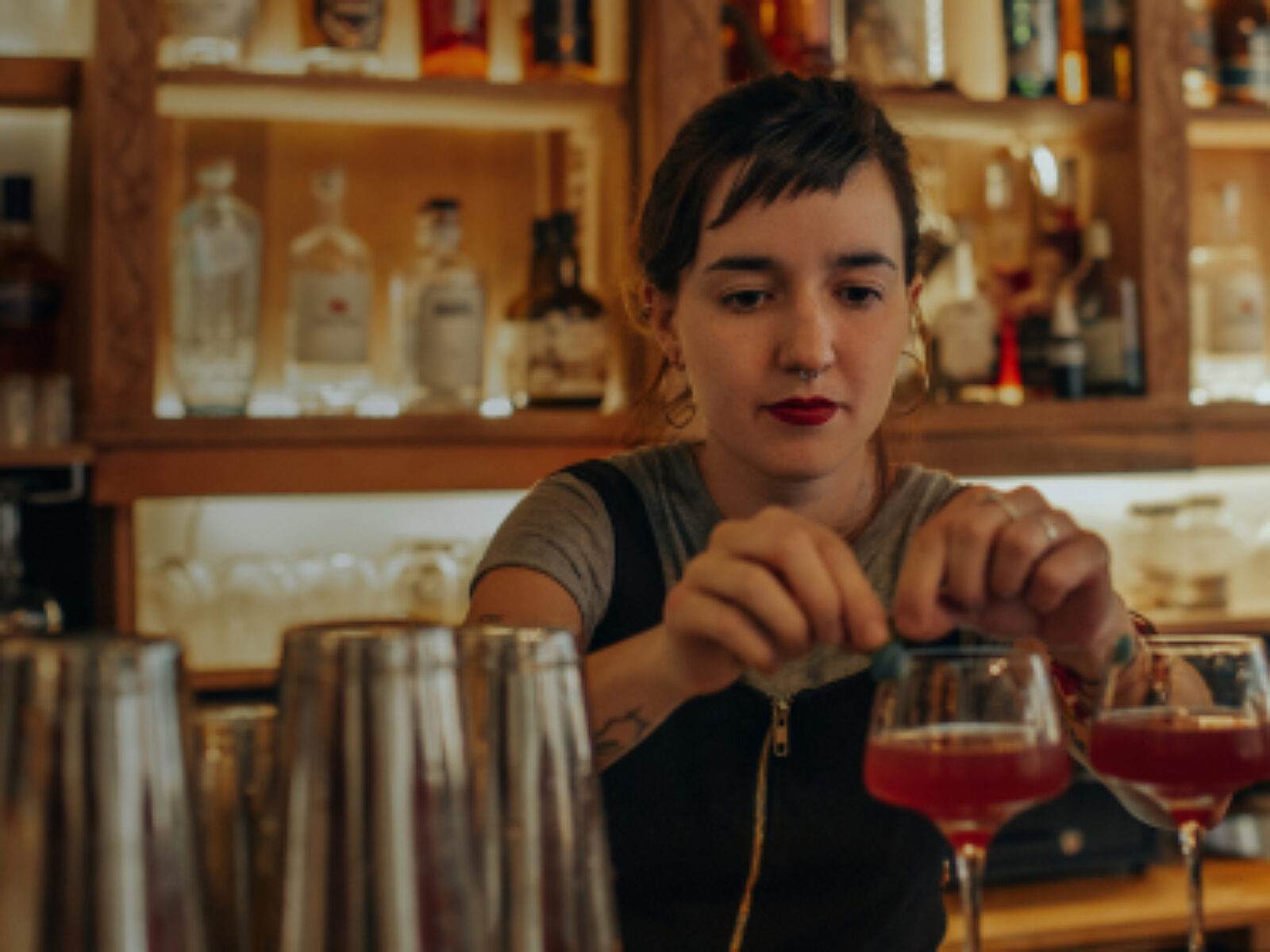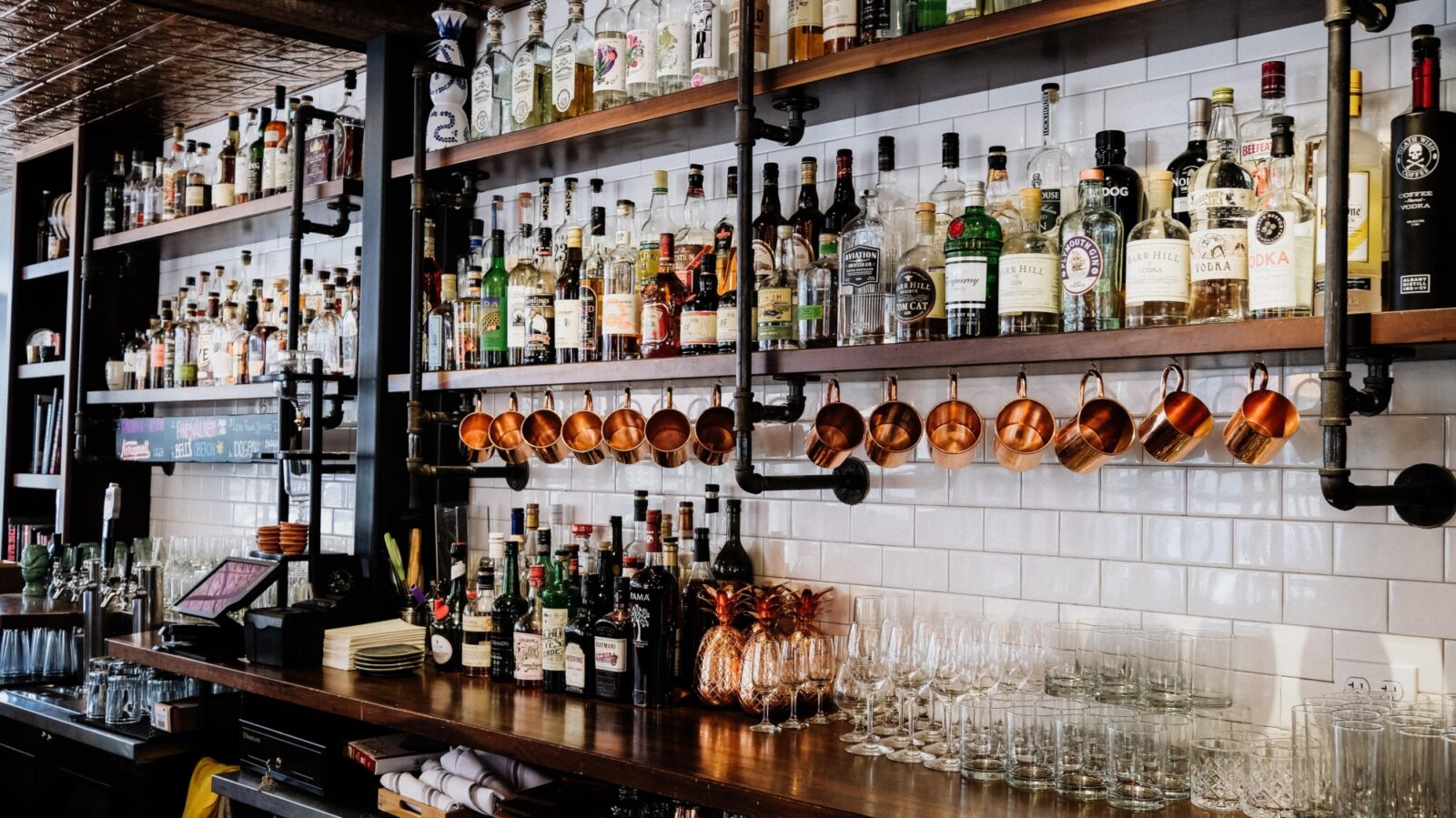
What is the Average Bar Profit Margin?
Tips for how to calculate, and boost, your bar's profit margin.

Sarah PekalaAuthor
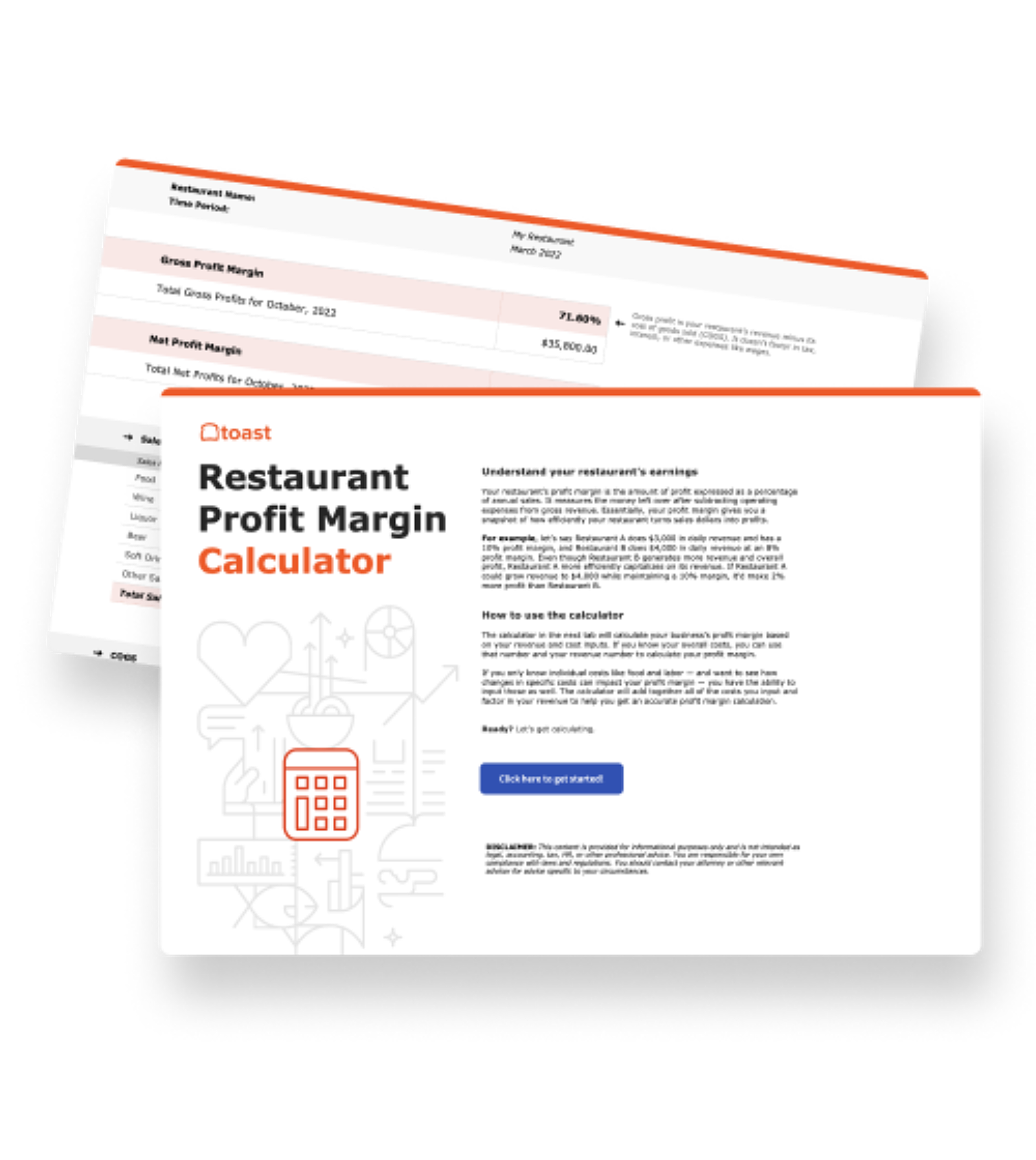

Restaurant Profit Margin Calculator
Use this free Restaurant Profit Margin Calculator to see how efficiently you turn sales dollars into profits.
Get free downloadWhat is the average bar profit margin?
The average pour cost varies by bar type, drinks served, and location; but when we analyzed our customer base, we found that the average pour cost is between 18-24 percent, in line with the industry standard 18-20 percent pour cost; the average bar profit margin is therefore 78-80 percent, far higher than the average food profit margin.
Regardless of what type of bar you operate, delighting your bar guests usually entails creative drinks, an inviting environment, and a memorable ambiance.
But delight goes both ways: While creating a memorable experience for bar guests is paramount, you should also focus on driving a profit — that means increasing revenue by generating sales as well as taking control of your costs.
Whether you're getting ready to open a new bar, or you’re a seasoned bar owner reevaluating your current finances, boosting your bar’s profit margins is a lot easier than you think. Here are three simple ways how.
Restaurant Profit Margin Calculator
Use this free Restaurant Profit Margin Calculator to see how efficiently you turn sales dollars into profits.

How to Calculate Your Bar Profit Margin
The profit margin for bars is calculated by dividing net income (or profit) by total revenue.
Net Income ÷ Revenue = Bar Profit Margin
This number represents how many cents per dollar of revenue is net income. Most bars aim for a profit margin of around 80 percent. In fact, the overall average gross profit margin for bars is about 75%. The key to reaching that number is to measure and control your pour costs.
Pour cost is an essential benchmark for your bar’s profitability. Monitoring and controlling pour cost — which means keeping it as low as possible — is the difference between a profitable bar and a failing one.
Pour costs are the inverse of your profit margin: If your bar’s profit margin is 75 percent, your pour cost is 25 percent.
What is the Average Bar Profit Margin?
The average net profit margin for a bar is between 10 and 15%. However, the average pour cost varies by bar business type, drinks served, and location. For example, a wine bar in New York is going to have a different pour cost than a sports bar in Wisconsin. However, when we analyzed our customer base, we found that the average pour cost is between 18-24 percent, in line with the industry standard 18-20 percent pour cost; the average bar profit margin is therefore 78-80 percent.
Here’s the breakdown of the average pour cost by drink category:
Beer: 24 percent
Liquor: 15 percent
Wine: 28 percent
How much do bars make?
According to BinWise, the average bar revenue is $27,500 per month, which translates to an average of $330,000 annual revenue. However, the bottom line of every establishment in the hospitality industry is going to differ.
Bar profitability is also dependent on promotions like happy hours and those first-year overhead costs and licensing fees. With this being said, the salary of a bar owner fluctuates. However, bar owners make an average annual salary of $74,791 per year or $6,247 per month.
How to Increase Bar Profitability
The single best way to increase your bar’s profit margin is to decrease your pour costs.
Some other options include increasing your menu prices, increasing the volume of drinks you pour, controlling food costs, or minimizing labor costs and operating costs. However, decreasing costs is the easiest to control and therefore our first choice for bar and restaurant owners looking to increase their bar’s profit margin.
To calculate your pour cost, use the following metrics:
Divide your total inventory usage—or cost of goods sold (COGS) by your total sales:
Inventory Usage ÷ Sales = Pour Costs
Remember: In the bar industry small changes can add up to some big positive change. Consider this scenario: Two bars are located next door to one another, Bar A and Bar B.
Both bars sell around $1M each year, but Bar A runs at a 20 percent pour cost and Bar B runs at a 30 percent pour cost.
In one year, with the exact same sales and customer base, Bar A will make $100K more in profits. #BeLikeBarA
Here are three easy-to-implement tips that will lower your pour costs, increase your bar’s profitability, and help you #BeLikeBarA.
Tip #1: Know Your Numbers
If you want to be profitable, you need to know your numbers like the back of your hand. The most important reports you should run in your bar’s POS system to boost profitability include:
The PMIX (product mix) report.
Menu item report.
The daily sales report.
To get a better feel for whether the drinks on your menu are bringing you closer to reaching your goal of profitability or moving you away from it, do the following exercise:
Calculate the pour cost for each drink on your bar menu; compare each drink’s pour cost to the sales volume for its drink category (i.e. beer, wine, liquor, frozen drinks, etc.). Consider calculating the following for each drink on your menu and for the menu as a whole:
Number of items sold
Popularity (or, percentage sold across the overall beverage program)
Recipe cost
Total cost of all items
Menu price per drink
Profit per drink
Total profit of all items
Total revenue of all items
Using these data points, sort each drink into profitability categories:
Winners
Losers
Too popular to get rid of
Need re-pricing
Another exercise you can do is to calculate both the pour cost and sales volume for each item on your menu; the drinks with a low pour cost and high sales volume are the winners (that you may be able to markup in price), and the ones with a high pour cost and low sales volume are the drinks you’ll want to get rid of or re-price.
Tip #2: Revisit Your Prices
What happens when you have a popular drink with a high pour cost? Reprice it!
Every single drink on your menu should be priced, down to the fruit and/or herb garnishes. Calculate the cost per ounce of a bottle of alcohol by dividing the cost of the bottle by the number of ounces. Once you have your cost-per-ounce calculations, you can price your drink recipes ounce-by-ounce.
Once each drink recipe is priced out, divide that number by your goal pour cost; this will give your drink’s ideal cost.
Here’s an example of the calculation for the popular Moscow Mule:
Ingredients
4 oz. Gosling’s Stormy Ginger Beer: $1.32 per can [12 oz. = 0.11 per ounce = $0.44 total cost]
1.5 oz. Green Mark Vodka: $12.99 [25.3 ounces = 0.51 per ounce = $0.77 total cost]
1 lime wedge: $0.50 per lime [8 wedges per lime = 0.50 / 8 = $0.06 total cost}
Total drink cost = $1.27 ($0.44 + $0.77 + $0.06)
Drink price = $8.46 ($1.27 ÷ 15%)
Pour cost = 15 percent
Bar profit margin = 85 percent
Let’s imagine for a second that your distributor was out of Green Mark that week and you had to change your Moscow Mule recipe to include a different vodka, like Tito’s. This will cost you $20.00 for a 750 ML bottle.
Your vodka cost for the same recipe would increase from $0.77 to $1.18 per drink. To maintain the 15 percent pour cost and 85 percent profit margin, you would have to increase the menu price of that same drink to $11.22: A $2.76 difference.
If you were to have your bartenders keep Tito's as your vodka of choice in your Moscow Mule recipe, over the course of a week you could potentially lose hundreds of dollars of profits if you don’t adjust the price.
Restaurant Profit and Loss Statement Template
Evaluate your restaurant's financial strengths and weaknesses with the free P&L and income statement template.

Tip #3: Monitor Variance
Shrinkage, loss, variance — no matter what you call it, here’s what it means: The difference between the amount of product sold over a given period of time and the amount of product used over that same period. In an ideal world, these two numbers would match up perfectly.
Variance can be caused by overpours, broken bottles, comped drinks, or theft. In fact, according to the National Restaurant Association, 75 percent of inventory shrinkage in restaurants is caused by theft.
At BevSpot, our clients average variance is 25-30 percent. These figures can add up over time, so it’s important to find ways to reduce your variance as much as possible. Here are some easy ways how:
Purchase only to reduce sitting inventory: Taking weekly or bi-weekly bar inventory will show you what you really have in stock and help you make smarter purchasing decisions.
Be wary of quantity discounts: Many distributors offer special deals or pricing when you purchase a certain percentage of a product. That extra case or bottle may seem like not a big deal at the moment, but you’re not really saving any money if you’re actually spending more to meet a discount minimum.
Invest in training for your bar team: Glass behind a bar is bound to break, but you can avoid over-pours or waste with a little bit of staff training. Consider making a recipe bible to help keep your team honest or adding pour spouts to your bottles.
Be a mathematician: Constantly check your key business numbers, such as pour costs, variance, and usage to grow your profit margins.
Pour Up Some Profits
You may also find it useful if you educate your bar staff on the importance of upsells. For more information on upselling for high profits check out this article. Follow these three tips and your successful bar will be well on its way to higher profits, happier customers, and a better experience for everyone.
Related Bar Business Resources
Is this article helpful?
DISCLAIMER: This information is provided for general informational purposes only, and publication does not constitute an endorsement. Toast does not warrant the accuracy or completeness of any information, text, graphics, links, or other items contained within this content. Toast does not guarantee you will achieve any specific results if you follow any advice herein. It may be advisable for you to consult with a professional such as a lawyer, accountant, or business advisor for advice specific to your situation.
Read More
Subscribe to On the Line
Sign up to get industry intel, advice, tools, and honest takes from real people tackling their restaurants’ greatest challenges.

